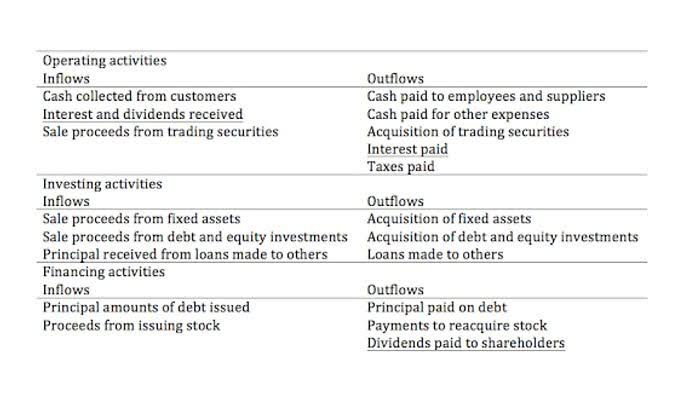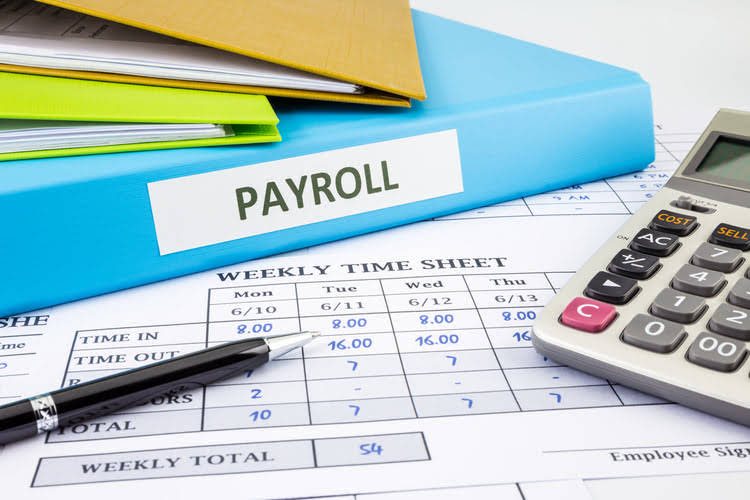The weighted average of outstanding shares is a calculation that incorporates any changes in the number of a company’s outstanding shares over a reporting period. The weighted average is a significant number because companies use it to calculate key financial measures with greater accuracy, such as earnings per share (EPS) for the time period. As mentioned above, the weighted average of outstanding shares calculation incorporates all the changes in the number of outstanding shares during the reporting period.
How to Calculate Year-to-Date Earnings
These two calculations provide information on how well a company performs over time. In above example, notice that Maria Company has adjusted all shares that exist prior to stock dividend (i.e., from January 1 to June 1). The purpose of this adjustment is to state these shares on the same basis as shares issued after the date of stock divided.
Application in Earnings per Share Calculations
On the other hand, while calculating the dilutive EPS, the denominator includes all possible conversions that can take place and increase the number of shares held by parties. Diluted EPS is always less than the basic EPS, as the denominator in the latter is higher. Unlike cash dividends, stock dividends distribute additional shares to existing shareholders, thereby increasing the total number of shares outstanding. For example, a 10% stock dividend would result in each shareholder receiving an additional share for every ten shares they own.
Valuing Earnings Per Share (EPS) Versus Diluted EPS
The number of shares outstanding can change substantially over the course of a year. For example, the board of directors might elect to buy back a certain number of shares. Or, a holder of the company’s convertible bonds may elect to convert them into common stock. Another possibility is that a corporate stock purchase program allows employees to buy a modest amount of company shares over time. In addition, employees may have been granted stock options, which allow them to buy company shares within certain date ranges.
Calculating Weighted Average Shares for Precise EPS Reporting
Those with complex structures, including potential dilutive securities, must report both basic EPS and diluted EPS. The Weighted Average Shares Outstanding represents a company’s normalized, time-weighted common share count across a specified period of time. Beyond investment decisions, EPS influences executive compensation tied to stock performance. Accurate calculations are essential to prevent overcompensating executives based on inflated metrics. However, the case changes whenever the Company does a stock split or a share reverse. We multiplied the number by 12 for each month and did an average over these 12 months.
Regulatory bodies, such as the SEC, require reconciliation of adjusted EPS to GAAP EPS to ensure transparency. Below is the Weighted Average Shares calculation example when shares are issued and repurchased during the year. Let there be a Company A that has 100 thousand shares outstanding at the start of the year, i.e., 1 January.
The treasury stock method is commonly used to estimate the impact of stock options and warrants on the diluted share count. This method assumes that the proceeds from the exercise of these options are used to repurchase shares at the current market price. The net increase in shares is then added to the weighted average shares outstanding.
If the Company buys back the shares, they are treated similarly to the shares issued, but on how to write a winning invoice letter in 8 easy steps the opposite, the shares are reduced from the calculation. It can split its stock to reward its current investors and to make its price per share more tempting to new investors. It can reverse-split its stock to keep its head above water, artificially increasing its share price.
Impact of stock dividend and stock split on weighted average number of shares outstanding
For example, in a 2-for-1 stock split, a shareholder with 100 shares priced job costing accounting software at $50 each will post-split own 200 shares priced at $25 each. These adjustments maintain consistency in EPS calculations across reporting periods. The first step is identifying changes in the number of shares outstanding during the reporting period. These changes may result from corporate actions like share issuances, buybacks, or conversions of convertible securities. For example, if a company issues 50,000 shares on March 1 and repurchases 20,000 shares on September 1, these events must be recorded with their respective dates.
- Master the weighted average common shares formula to enhance your financial analysis and improve earnings per share accuracy.
- Companies must also consider tax implications, such as capital gains and dividends, alongside the opportunity cost of using cash reserves for repurchases.
- Let us consider the following example and incorporate various scenarios that can affect the weighted average number of shares outstanding.
- Accurate earnings per share (EPS) reporting is crucial for investors and stakeholders to assess a company’s financial health.
- In effect, it weights any change in the number of shares outstanding according to the length of time that change was in effect.
- Weighted averages are also used in other aspects of finance including calculating portfolio returns, inventory accounting, and valuation.
How to Calculate Weighted Average Shares Outstanding
- These adjustments maintain consistency in EPS calculations across reporting periods.
- Issuing new shares raises capital for purposes like expansion or debt reduction but dilutes existing shareholders’ ownership unless they buy more shares.
- A stock dividend only affects those shares that already exist prior to its occurrence.
- Understanding how to calculate weighted average shares is essential for precise financial analysis.
- Let us take the example of a company with 200,000 shares at the beginning of the year on January 01, 2018.
- Privately-held companies are not required to report earnings per share, so they do not need to calculate this number.
Investors may choose to use weighted averages if they have compiled a position in a particular stock over a period. Given continuously changing stock prices, the investor will calculate a weighted average of the share price paid for the shares. In case there is a large difference between basic and diluted EPS, investors should be aware of the possible increase in the number of shares outstanding in the future.
Earnings per share is a measure of a company’s valuation, calculated by dividing its profit by the number of shares outstanding. A company’s market capitalization is the current market value of all of its outstanding shares. The calculation must align with accounting standards and regulatory requirements, such as Generally Accepted Accounting Principles (GAAP) in the U.S. and International Financial Reporting Standards (IFRS) globally. These standards ensure consistency and comparability across financial statements, allowing stakeholders to accurately assess a company’s performance. Compliance with these guidelines enhances the credibility and transparency of financial reporting. The below what is accounting and why it matters for your business table shows the weighted averages shares outstanding calculation in a tabular format.
The number of outstanding shares changes if the company issues new shares, repurchases existing shares, or if employee options are converted into shares. Dilution occurs when a company issues additional shares that reduce an existing investor’s proportional ownership in the company. This number is significantly important for public companies as it constitutes the basis for computing important financial metrics like earnings per share (EPS). Since private companies are not legally required to report EPS on their income statement, they don’t need to calculate the weighted average number of shares outstanding. Calculating the weighted average common shares outstanding is a key step in determining earnings per share (EPS), a critical metric for assessing a company’s financial performance.




